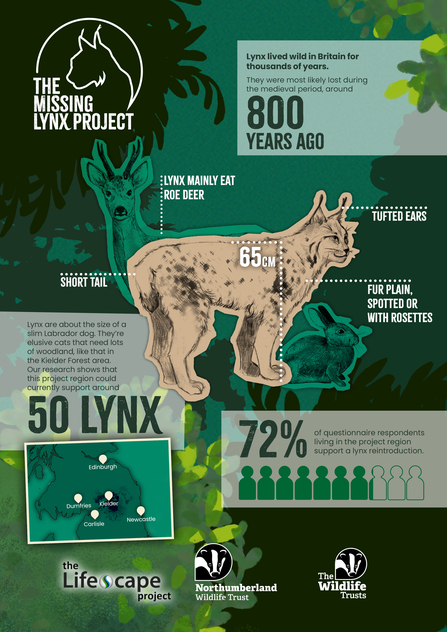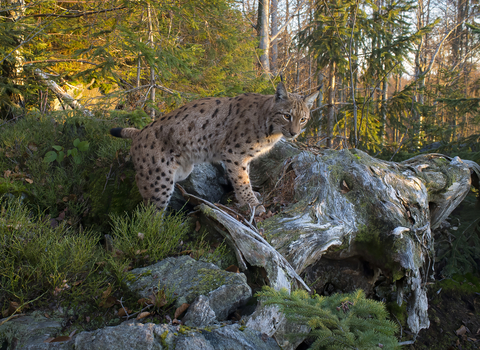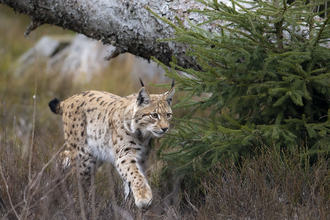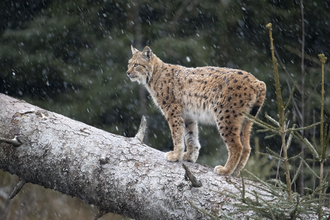What is a lynx?
The lynx is an elusive woodland cat, mostly active between dusk and dawn. They are roughly the height of a Labrador dog but weigh less, have a short tail and tufts of black fur on the tips of their ears.
They mainly prey on roe deer, but occasionally eat smaller mammals such as foxes or rabbits.
Lynx are found in mainland Europe and once thrived in woodlands across Britain. It is most likely that they were lost during the medieval period, due to hunting and changes to their woodland habitat. They were also lost from much of Europe, but reintroductions have helped them return to many of their former homes.
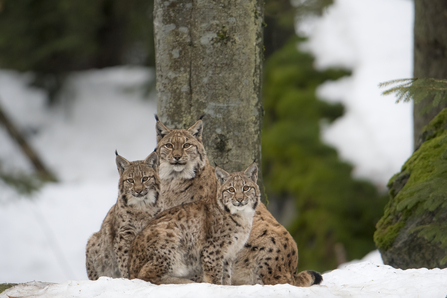
Lynx family © Berndt Fischer
The Missing Lynx Project
The Missing Lynx Project is a partnership project investigating the possibility of reintroducing lynx to Britain. The project is focusing on a habitat patch in Northumberland and bordering areas of Cumbria and southern Scotland.
The Missing Lynx Project is led by the Lifescape Project, in partnership with Northumberland Wildlife Trust and The Wildlife Trusts.
Exploring whether lynx can be reintroduced
The Missing Lynx Project is exploring the ecological, practical and social feasibility of reintroducing lynx. This is basically asking three key questions:
- Is there an area in England where lynx could live?
- How could we go about bringing lynx back?
- Would local people accept lynx back in the landscape?
Research shows a healthy population is possible
The project’s research found that if lynx were to be released in Northumberland, they could grow into a healthy population covering north-west Northumberland, the edge of Cumbria and the bordering areas of southern Scotland. This is currently the only area in England and Wales with the extensive forest habitats that lynx need.
72% of local people support the idea of a lynx reintroduction
The Missing Lynx Project spent more than year discussing this research and the subject of reintroduction with thousands of people in the project area.
They welcomed almost 10,000 people to their travelling Missing Lynx exhibition, held more than 100 stakeholder meetings and one-to-one interviews, and set up a number of focus groups, including several for farmers. They also created questionnaires to record views on lynx.
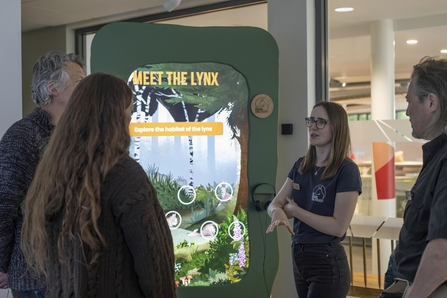
Missing Lynx exhibition © Trai Anfield
The project received more than 1,000 responses from people in the project region, with 72% supporting the idea of a lynx reintroduction.
The Missing Lynx Project is now working with local communities to consider how a reintroduction project could be managed to maximise benefits and reduce risks.
The partnership hopes to apply for a licence to reintroduce lynx to north-west Northumberland once they have a plan that's collaboratively designed with local people which sets out measures that are acceptable, feasible and can be implemented.
Get involved by sharing your views
The project has launched a new survey to gather thoughts from people across Britain on lynx and their reintroduction. Please do get involved by completing the questionnaire! It will take about 10 minutes.
Explore more
